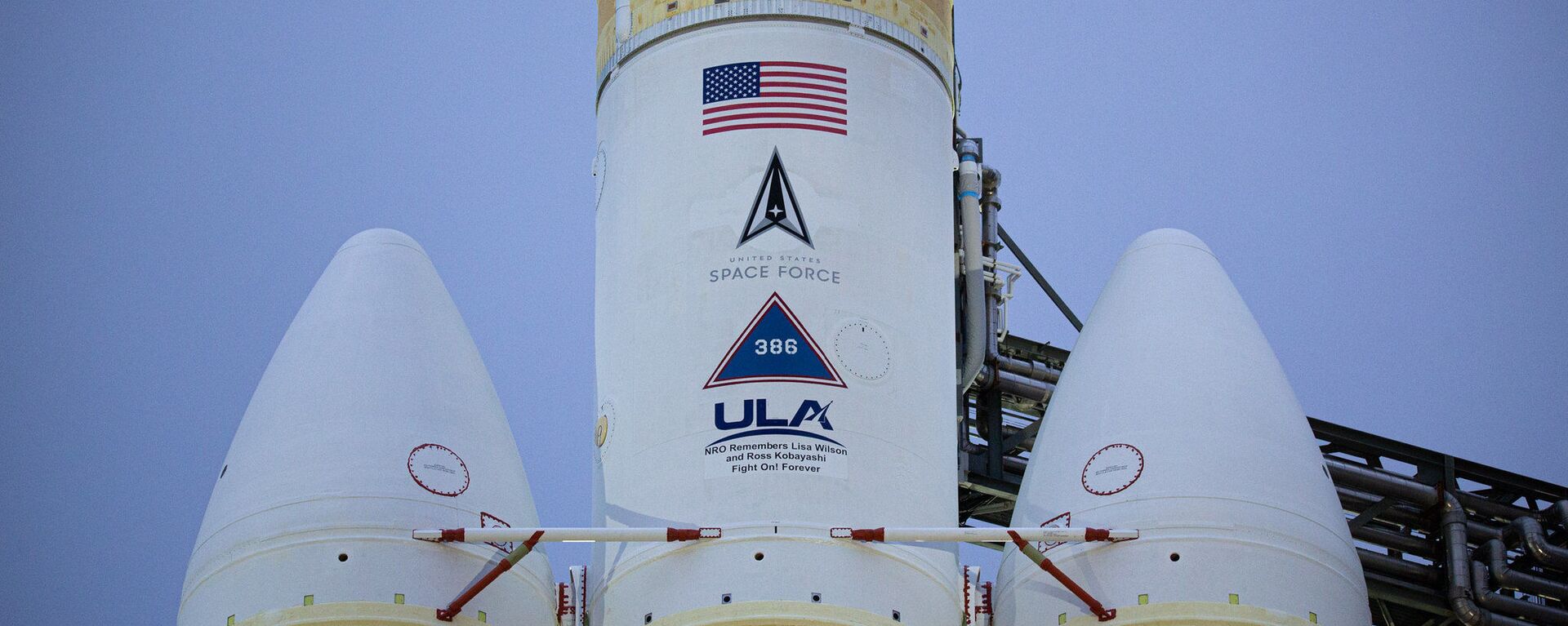https://sputnikglobe.com/20231010/us-to-quadruple-number-of-spy-satellites-over-next-decade--nro-deputy-director-1114072604.html
US to Quadruple Number of Spy Satellites Over Next Decade – NRO Deputy Director
US to Quadruple Number of Spy Satellites Over Next Decade – NRO Deputy Director
Sputnik International
The US National Reconnaissance Office (NRO) is planning to quadruple the number of intelligence satellites operating in orbit and as a result increase the number of images by more than ten times, deputy director Maj. Gen. Christopher Povak said on Tuesday.
2023-10-10T15:48+0000
2023-10-10T15:48+0000
2023-10-10T15:48+0000
world
us
us national reconnaissance office
spy satellites
https://cdn1.img.sputnikglobe.com/img/107385/52/1073855246_17:0:1903:1061_1920x0_80_0_0_3a7e693e455103e233844b1a772d87ba.jpg
“Within the next decade NRO expects to quadruple the number of satellites we currently have on orbit, different sizes, different orbits, or commercial and national these satellites will deliver over 10 times as many signals and images that were collected today,” Povak said during a discussion hosted by the Mitchell Institute for Aerospace Studies. As part of US attempts to protect its vital systems in space, in September NRO launched the Silent Barker system that will provide warnings and enable to figure out the intents of competitors, mainly Russia and China, as well as to defend NRO assets in space and deter possible aggressions, Povak added. According to reports by US defense and space media, the Silent Barker mission, also known as NROL-107, cost the nation about $115.6 million and will become operational by 2026. Silent Barker was designed as a replacement for the older Space-Based Space Surveillance System satellites. The space force is mostly equipped with ground-based observation sensors, which only allow the operators to follow basketball-sized or larger objects' movements, Defense News reported. Orbit-based sensors are expected to provide better visibility.
https://sputnikglobe.com/20230608/us-new-spy-satellite-constellation-another-small-step-toward-militarization-of-space-1111012686.html
Sputnik International
feedback@sputniknews.com
+74956456601
MIA „Rossiya Segodnya“
2023
Sputnik International
feedback@sputniknews.com
+74956456601
MIA „Rossiya Segodnya“
News
en_EN
Sputnik International
feedback@sputniknews.com
+74956456601
MIA „Rossiya Segodnya“
Sputnik International
feedback@sputniknews.com
+74956456601
MIA „Rossiya Segodnya“
us spy satellite program, us spy satellite capabilities
us spy satellite program, us spy satellite capabilities
US to Quadruple Number of Spy Satellites Over Next Decade – NRO Deputy Director
WASHINGTON, October 10 (Sputnik) – The US National Reconnaissance Office (NRO) is planning to quadruple the number of intelligence satellites operating in orbit and as a result increase the number of images by more than ten times, deputy director Maj. Gen. Christopher Povak said on Tuesday.
“Within the next decade NRO expects to quadruple the number of satellites we currently have on orbit, different sizes, different orbits, or commercial and national these satellites will deliver over 10 times as many signals and images that were collected today,” Povak said during a discussion hosted by the Mitchell Institute for Aerospace Studies.
As part of US attempts to protect its vital systems in space, in September NRO launched the Silent Barker system that will provide warnings and enable to figure out the intents of competitors, mainly Russia and China, as well as to defend NRO assets in space and deter possible aggressions, Povak added.
According to reports by US defense and space media, the Silent Barker mission, also known as NROL-107, cost the nation about $115.6 million and will become operational by 2026.
Silent Barker was designed as a replacement for the older Space-Based Space Surveillance System satellites. The space force is mostly equipped with ground-based observation sensors, which only allow the operators to follow basketball-sized or larger objects' movements, Defense News reported. Orbit-based sensors are expected to provide better visibility.



